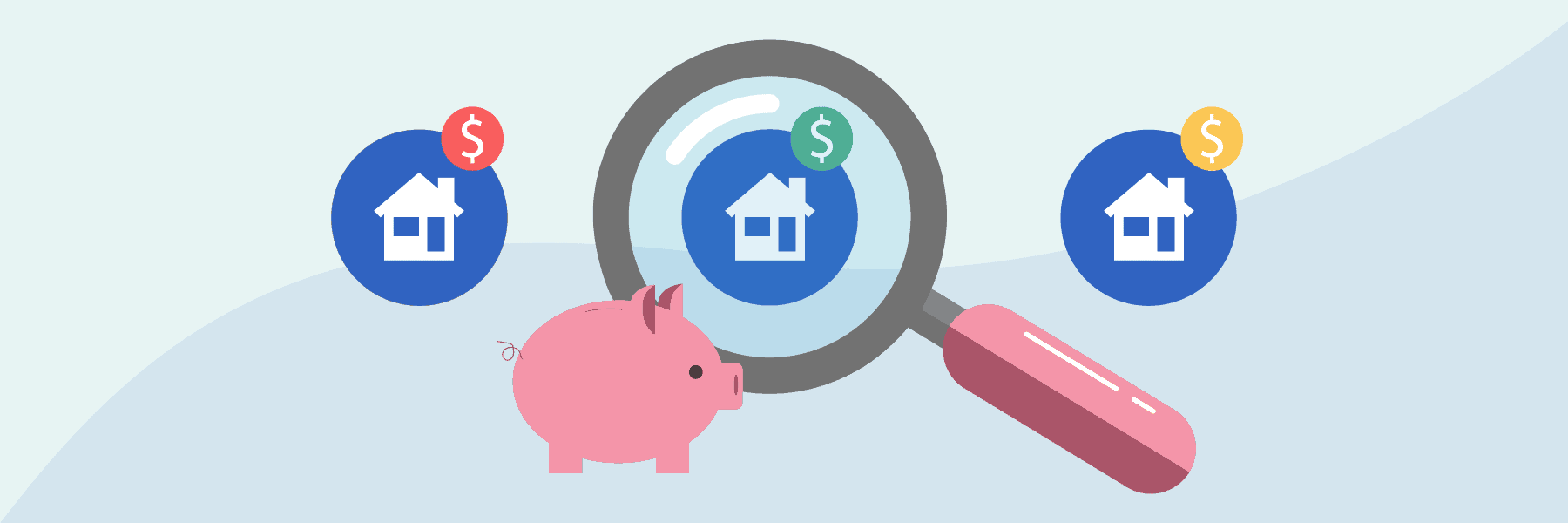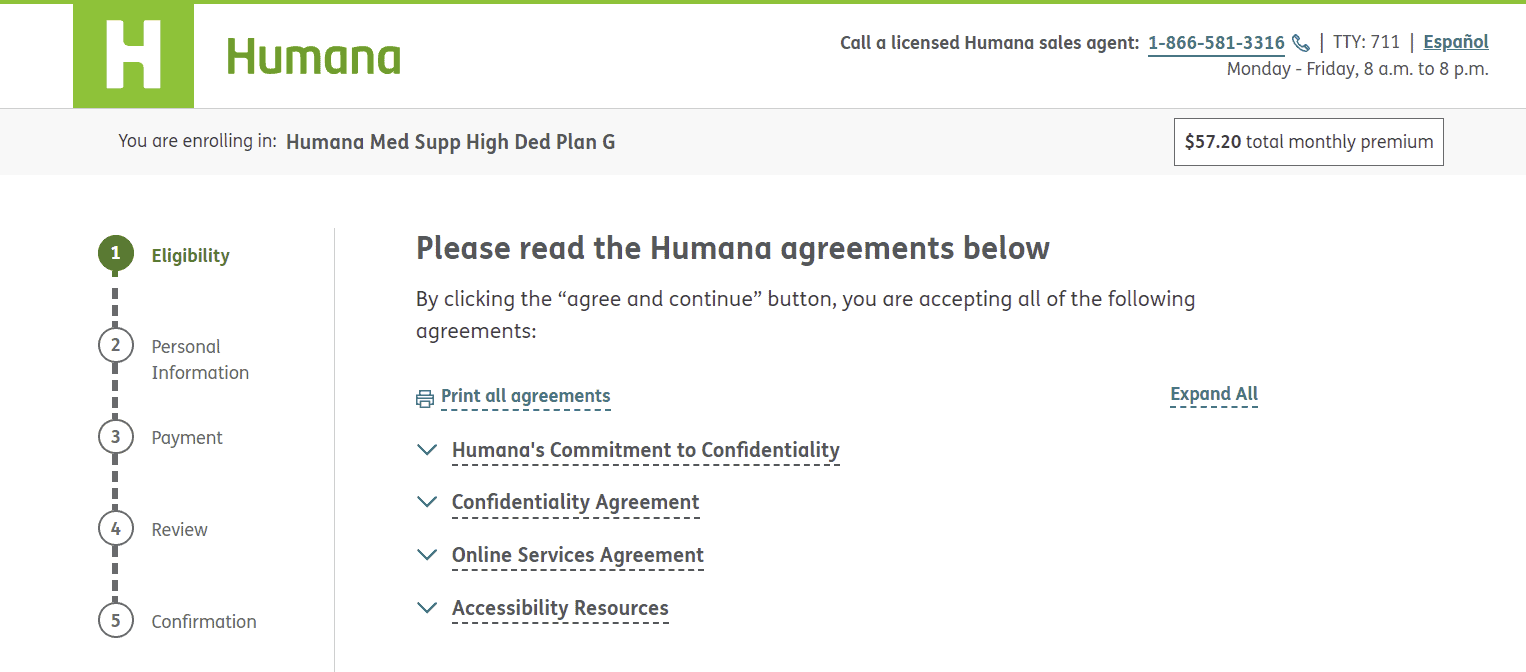How to Find Affordable Senior Housing Based On Your Income
There are many programs to make housing more affordable for seniors, including low-income apartments, HUD housing programs, and adult foster homes.
SeniorLiving.org is supported by commissions from providers listed on our site. Read our Editorial Guidelines
Find Low Cost Senior Housing Near You
Join 1,019,247 Seniors Who've Searched for Housing Communities on SeniorLiving.org.
Or Call: (844) 623-7964Affordable Senior Housing: Key Takeaways
- While it can be difficult to afford senior housing and care, there are several programs and ways to reduce out-of-pocket costs.
- Medicare and Medicaid don’t typically pay for senior housing; however, there are several other ways to help cover costs, including long-term care insurance and government programs.
- Are you concerned about how you’ll pay for housing or care? Visit our guide to paying for senior living with no money to learn how to alleviate the financial burden.
If you live on a fixed income, you know that finding affordable senior housing is crucial. As the older population in the U.S. continues to grow, so does the demand for affordable senior living options. It is even more vital for those who live below the national poverty level.
Below, we’ll cover some programs and other innovative solutions to help you find housing for seniors based on income, as well as budget tips to help you get the most out of your money.
What Is Affordable Senior Housing?
“Affordable” means different things to different people. When we use it to talk about senior housing, we’re referring to housing options that low-income seniors or those living on a fixed income can afford. This assumes that the rest of your budget is in line with your income and expenses. We know that even with a fixed income, everyone’s financial situation is unique.
More than 34 percent of senior homeowners, as well as 58 percent of renters, are cost-burdened (spending 30 percent or more each month on housing1). Seniors — or anyone really — should aim to spend no more than 30 percent of their income on housing costs.
Spending beyond that percentage on housing is called a housing cost burden. Sadly, a housing cost burden often forces seniors to make cuts to other parts of their budget, like food, medicine, and recreation.
Our free housing and care finder uses your unique needs to curate a list of the best options in your area.
Affordable Senior Housing Options for Different Income Levels
SeniorLiving.org Is Now Livestreaming
We are hosting live Q&As with senior care and housing experts on our YouTube channel. Check out one of our latest streams below and tune in to upcoming streams @SeniorLiving.org on YouTube!
Affordable housing is in short supply in many areas, especially for seniors. However, that doesn’t mean you’re out of luck. With a little research, some waiting, and an open mind, you can find affordable senior housing that meets your budget.
Low-Income Senior Apartments and Condos
Some apartment and condo complexes cater exclusively to low-income seniors. With this option, you can enjoy your own private living space at a price that you can afford; this is typically no more than 30 percent of your adjusted gross income (AGI). So, if your AGI is $1,000 per month, you’d owe no more than $300 for rent. Varying government programs, nonprofits, and other groups subsidize the cost.
Low-income senior apartments have other benefits, too. Many offer accessibility features such as elevators and shower bars. Plus, age eligibility requirements, such as 55+ or 62+, ensure that you’ll be living amongst peers, which can help you avoid loneliness and depression.
Searching online for “low-income senior housing near me” is a great way to find nearby options. You can also look into nonprofits. Nonprofit housing organizations that provide low-income senior housing include:
- Volunteers of America: This nonprofit housing organization has a network of 500 properties in 42 states and Puerto Rico, plus over 2,000 rental units. Housing options for seniors include low-income senior housing units, assisted living, and skilled nursing care. Search by ZIP code on their website to find housing in your area.
- Good Samaritan Society: This evangelical Lutheran organization provides religious housing for older adults on a tight budget. You could apply for a budget-friendly senior apartment through the Good Samaritan Society branch in your area. The minimum age is as young as 50. You do not have to be a member of a Lutheran church to use these services, but you will have to show proof of income.
- HumanGood: This nonprofit runs 100 affordable senior housing communities in California, Oregon, Washington, Delaware, and Pennsylvania, with around 8,880 residents. The minimum age requirement is 55.
- Mercy Housing: A national nonprofit organization, Mercy Housing, offers affordable housing communities to low- and moderate-income populations. This includes seniors and veterans! The majority of properties offer resident services and resources, including health and wellness support, community involvement, and financial stability.
- Catholic Charities USA: This is another nonprofit religious organization, but it helps seniors of all faiths. Catholic Charities USA has provided over 38,000 affordable housing units to those in need, including 12,283 seniors nationwide.
Cooperative Housing for Seniors
Cooperative housing for seniors isn’t the most affordable option on our list, but it can be cheaper than moving into a retirement community or staying in your own home. In a co-op, a company owns the building(s) and land. Seniors can purchase shares in the company.
In exchange, you can lease a housing unit and use common areas, such as fitness rooms, community kitchens, laundry facilities, and outdoor spaces. Along with purchasing shares, you’ll need to pay a monthly fee for the “master mortgage,” taxes, utilities, maintenance, repairs, etc.
Some older adults prefer co-ops because they're an investment, unlike moving into an apartment. However, the goal of a co-op isn’t to make money; shares only grow 1 to 2 percent each year. Instead, the goal is to improve the quality of life for all members.
Co-op members vote on how the building and property are managed. If you need to move out of the co-op, you can sell your shares back to the company or another member. You receive the cost of your shares plus any accrued equity.
If you have funds to pay a little more for co-op housing, this can be a great way to enjoy communal housing and still get most of your funds back if and when you want to move.
Find senior co-ops using the Senior Cooperative Foundation’s website. There are more than 125 senior co-ops in the United States.
Pro Tip: Haven’t retired yet? Estimate how much Social Security you’ll receive to get a better idea of your finances and budget for housing.
HUD Housing Programs
The Department of Housing and Urban Development (HUD) offers two low-income housing programs that benefit seniors.
Section 8 Housing Choice Vouchers
Low-income seniors may qualify for housing choice payment vouchers to help them afford rent. Local Public Housing Agencies (PHA) distribute the vouchers, but you’re required to obtain your own housing. This could be an apartment, condo, single-family home, or townhouse.
However, the landlord must agree to rent under the program. The PHA will pay your landlord directly. Then, you’ll pay your landlord the difference. Just keep in mind that some landlords may refuse Section 8 vouchers outright, and only some states and municipalities offer protection from this situation under fair housing laws. Contact your local PHA to apply.
There is often a long waiting list for HUD housing, but immediate housing is often available for older adults who are homeless or without a safe and sanitary place to live.
Section 202 Supportive Housing for the Elderly
HUD helps fund the creation or rehabilitation of multifamily properties for very low-income adults ages 62 years and older. Section 202 consists of affordable housing options for eligible “very low-income seniors.” Although designed for independent living, many offer support services like cleaning, transportation, and cooking.
If you move into a Section 202 supportive housing for the elderly program property, the government subsidizes your rent. You’ll only owe 30 percent of your adjusted income. To qualify, your household must make less than 50 percent of the local Area Median Income. Plus, at least one household member must be 62 years of age or older.
Virtual Retirement Communities
Seniors can save money on housing by choosing to stay in their own homes and becoming members of a local virtual retirement community. Virtual retirement communities are grassroots, nonprofit organizations that provide older adults with a variety of accessibility services. Think neighbors helping neighbors.
For instance, a virtual retirement community might provide transportation, grocery shopping, tree removal, or group outings for members. In other words, you enjoy some benefits of living in a retirement community without having to move into one.
Within a virtual community, members may not have to pay anything, or they may pay up to $1,200 per year.2 The fee covers employee wages and the expense of activities and support services. This is one of the lowest costs for senior care services available in the U.S.
Use the Village to Village Network website to locate virtual retirement communities in your area. You can also do an internet search for “virtual retirement communities near me.”
Adult Family Homes or Adult Foster Care
An adult family home is a type of foster care that involves a group setting of up to six seniors who live together in a home environment. Each resident has their own room, but everyone shares common spaces like the kitchen and living room.
These residential homes must be approved, licensed, and monitored by the local Department of Family Services. The home itself is managed by paid supervisors, as well as a team of counselors, nurses, dietitians, and social workers. Within the home, older adults are provided with assistance with daily needs, as well as housing, meals, and social activities.
Keep in mind that this type of affordable senior housing is for individuals with a low level of care who do not require specialized medical care. Although it will cost more than a low-income senior apartment, it is a more affordable alternative to assisted living facilities. Contact your local Department of Family Services to learn about adult foster care homes in your area.
Move in With Family
Only 6 percent of adults aged 60-plus in the U.S. live in extended-family households compared to 38 percent globally.3 However, just because it’s uncommon doesn’t mean you should overlook it as an option.
Moving in with one of your children, a niece or nephew, an adult grandchild, or other adult relative is free or low-cost. As an added bonus, you’ll have loved ones close by when you need assistance. This is also great for seniors who want to remain social but don’t have the funds to move into a community of their peers.
Before entering into this kind of living arrangement, sit down with your family and have an open discussion about your and their expectations. Talk about what steps, if any, need to be taken to make the home safer and more accessible.
For many families, the arrangement is mutually beneficial. Grandparents can help out with the grandkids, and families enjoy the peace of mind of knowing that their aging loved one is being cared for.
Find a Roommate
It’s becoming more common for adults aged 50-plus to live with roommates (also called housemates). If you already have a home that you’d like to stay in, adding a housemate or two can help you keep up with mortgage, property taxes, and maintenance costs.
Seniors interested in living as a roommate also save money compared to living alone. Don’t ignore the social benefits, either! Regular social connections can help you combat loneliness and social isolation, which are associated with increased rates of depression4.
A handful of companies and nonprofits exist that help seniors find other older adults to live with:
- New York Foundation for Senior Citizens: This organization pairs potential roommates with seniors who have a spare room in their home. Social workers screen all program applicants and oversee “match meetings” between potential roommates. The goal is to secure both parties with a living situation they feel comfortable with and can afford. At least one person must be aged 60 or older.
- Affordable Living With Aging: This Los Angeles-based nonprofit provides shared housing options for seniors experiencing financial uncertainty. Since launching in 1978, the organization has matched over 2,400 seniors with roommates in a supportive, shared living environment. A member of the National Shared Housing Resource Center, ALA is a great option for older adults who would like to save money and enjoy the company of a roommate.
- Silvernest: This site helps hosts and renters find and enter into homeshare arrangements. Fill out a profile with personal information and what you’re looking for in a roommate/home environment. Then, browse matches in your area. Silvernest offers a paid and free version. The paid version includes a background check, which we’d recommend for everyone’s safety. According to Silvernest, hosts earn an average of $850 per month. Additionally, renters save an average of $750 per month compared to renting their own one-bedroom apartment.
How Do I Find Affordable Senior Housing Near Me?
If you require low-income housing, contact your local HUD public housing authority. The office will direct you to the next step in the application process. You can also call 211 or visit your local 211 website to speak with someone about your housing needs. 211 agencies help Americans meet basic needs, including housing, food, health care, and transportation.
A quick internet search can go a long way, too. Simply search for the type of housing you’re interested in, along with your city. For example, “low-income senior housing in Philadelphia.” Or, take advantage of our senior living directory, where you can search through state-by-state listings or via your ZIP code to find senior living services near you.
Affordable Senior Housing Resources By State
How Do I Pay for Senior Housing?
Even if you’re able to find an affordable place to live, you may still fret about how you’ll pay for it. Seniors can get assistance paying for housing and care using a variety of methods, such as:
- Social Security and retirement income: In 2025, retired workers receive an average Social Security benefit of $1,976 per month5. Many seniors rely on their Social Security income and other retirement income, like pension or investment account withdrawals, to cover senior housing costs.
- Selling or renting your home: If you plan to move in with family, into an apartment, or into a senior living community, you can sell or rent out your existing home. Use that money to help cover the costs of aging in your new place or care in a senior living community.
- Housing vouchers: If you qualify for a voucher, you pay no more than 30 percent of your adjusted income on rent and utilities. The government pays the rest.
- Long-term care insurance: Policies vary, but long-term care insurance can help cover a move into assisted living, memory care, or a nursing home.
- Other private funds: Families take care of aging loved ones in different ways. Sometimes, younger family members help out with living costs so that seniors can remain in their own homes, even while living on a fixed income.
>> Additional Resource: Does Social Security Pay for Assisted Living?
Will Medicaid or Medicare Pay for Low-Income Senior Housing?
It’s hard to keep track of what Medicaid and Medicare will cover. Unfortunately, Medicaid and Medicare can’t be used to pay for your mortgage, low-income senior housing, or room and board at an assisted living facility. While Medicare does not cover senior housing and most senior living care costs, it does cover short-term nursing home stays following a hospital stay.
Medicaid may make moving to an assisted living facility more affordable, though. You may be able to use Medicaid to pay for assisted living services, such as nursing and personal care services in an assisted living facility. You just can’t use it for room and board. Check with your state Medicaid program to see what coverage, if any, is offered, as it varies by state.
Budgeting Ideas for Seniors on a Fixed Income
Since “affordable” is relative, it’s helpful to determine exactly what “affordable senior living” means to you. A good place to start is by making a budget. If you’re on a fixed income, making a budget is easy because you know how much money you’ll have each month. However, your fixed income might not be enough to cover your necessary expenses.
First, write down your mandatory expenses to see how well your fixed income can — or will — handle your expenses.
These include:
- Housing
- Food
- Medicine
- Medical insurance
- Transportation
Of course, your budget can — and should — go beyond just mandatory expenses. For example, you should include a miscellaneous category for emergency expenses. Focusing on reducing your mandatory expenses is simply a good starting point.
To do this, take each category and determine a cheaper route for covering this need. For example, if you currently own a home, it might be cheaper to rent a senior apartment or live in independent senior housing.
Owning a home involves paying for maintenance, property taxes, and repairs, which may be costly if the home is older. Research affordable living options in your area, consider taking in a roommate, or talk with your family about moving in with them. All of these can help you lower your housing costs.
If you currently own a vehicle, consider how much you spend on car insurance, gas, maintenance, and repairs. Would it be a better deal to sell the vehicle, put that money into your savings, and use public transportation or virtual retirement community services? By evaluating each of your necessary expenses and brainstorming ways to cut costs by category, you can create a budget that helps you spend within your means.
As you calculate your budget and work on getting your finances in order, check out our financial guide for seniors. We cover important financial topics like planning for expenses and ways to make your money stretch.
FYI: There are hundreds of brands that offer discounts for older adults to help you save. Visit our guide to senior discounts to learn more.
Compare Senior Living Costs
To get a better idea of the costs for different types of senior care, visit our care cost guides below.
FYI: Have questions about senior care or housing? We’re hosting livestreams on our YouTube @SeniorLiving.Org with experts who are ready to answer your questions and provide advice based on years of experience. Send your questions to help@seniorliving.org and we’ll answer them during our next livestream!
Final Thoughts
Finding housing for seniors based on income ensures that you can move into housing that meets your needs and is still affordable. While it may seem harder and harder to find affordable senior housing, there are a lot of private and public resources to draw from. Additionally, evaluating your income, budget, assets (like owned property), health, and support from family and friends can help guide you toward the best senior living option for you.
Frequently Asked Questions About Housing for Seniors
-
What is the maximum rent based on income?
The “30 percent” rule gives you a general idea of how much you can afford to spend on rent each month. Simply multiply your gross monthly income (before income taxes or deductions) by 0.3 to find how much you should pay for rent based on this approximation.
-
Can I use Social Security for rent?
Yes, you can use your Social Security (SSI or SSDI) to pay for rent.
-
How do I qualify as low-income for HUD senior housing?
To qualify for HUD’s low-income housing programs, you must make less than 80 percent (lower income) or less than 50 percent (very-low income) of the area median income (AMI) for your location. Income limits differ by area, so you’ll need to check the current HUD income limits where you live.
-
What age does HUD consider elderly?
To qualify for HUD’s Section 202 Supportive Housing for the Elderly Program, you must be at least 62 years old.
-
Joint Center for Housing Studies of Harvard University. (2025). One In Three Older Households Is Cost Burdened.
-
Harvard Health Publishing. (2022). A new angle on aging in place: The virtual village.
-
Pew Research Center. (2020). Older people are more likely to live alone in the U.S. than elsewhere in the world.
-
National Institute on Aging. (2022). Depression and Older Adults.
-
Social Security Administration. (2025). What is the average monthly benefit for a retired worker?







